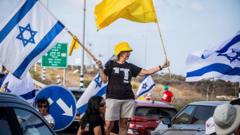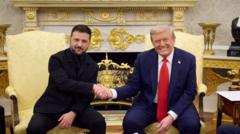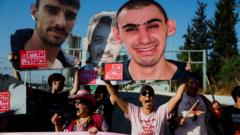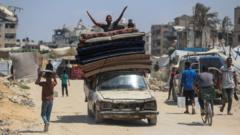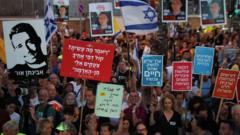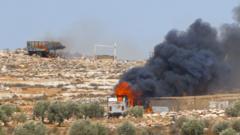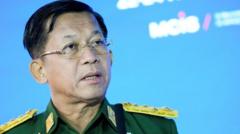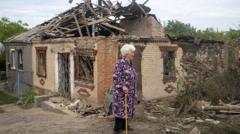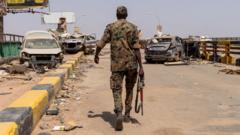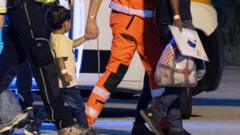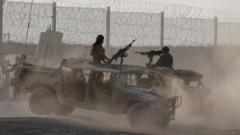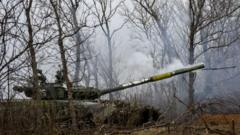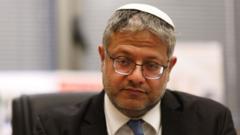Hanya Aljamal, a 28-year-old English teacher in Gaza, grapples with the drastic changes brought on by war, which has left her displaced and questioning her identity. Through reflections on her experiences and observations of daily life in the war-torn region, she shares insights into her struggle for purpose, the impact of violence on her community, and the remaining threads of hope, highlighting the stark contrasts in her surroundings from destruction to fleeting moments of beauty.
Life Amidst Ruins: A Glimpse into Hanya Aljamal's Reality in Gaza
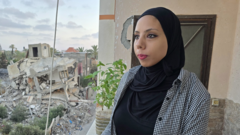
Life Amidst Ruins: A Glimpse into Hanya Aljamal's Reality in Gaza
A poignant narrative unfolds as Hanya Aljamal reflects on her life disrupted by war, showcasing the dichotomy between personal loss and resilient hope in the face of overwhelming adversity.
Hanya Aljamal, a 28-year-old Gaza resident, describes a life drastically altered by war, as she spends her days with her parents and five siblings in a crowded apartment. "I don't think God intended for people in their late 20s to live with their parents," she muses, reflecting on a time when she stood on the brink of an independent future. Just two years ago, she was an English teacher with aspirations for a Master’s degree in international development, her dreams now crushed beneath the weight of conflict.
From her balcony in Deir al-Balah, Hanya observes the duality of life in Gaza—an elderly neighbor tending a vibrant garden near a bombed-out building becomes a symbol of hope amidst chaos. As she captures her thoughts in an audio diary for a BBC documentary, she reveals the inner struggle of finding identity and meaning in the wake of devastation. “It’s hard finding purpose as your entire world falls apart,” she laments, noting that 90% of Gazans are without stable homes, often displaced multiple times.
The Israeli offensive in Gaza, launched in response to Hamas attacks in October 2023, has resulted in a dire humanitarian crisis. With over 56,000 reported fatalities—mostly civilians—and limited freedom for international journalism, the narrative is shaped largely by local perspectives. Hanya's life is a tapestry of horror and resistance; she balances her role as an aid worker with the grief of personal losses, reflecting on the trauma rippling through her community.
In one poignant moment, she watches girls engaged in a therapeutic dance session, where discussions of loss surface, highlighting how children cope in a warzone. Her balcony view transforms bands of dancing kites into symbols of defiance and yearning for normalcy amongst the oppressive sounds of drones overhead, which she describes as psychological torture.
As Eid al-Adha approaches, her family’s predicament becomes starkly evident. The celebration that typically brings joy is juxtaposed with their inability to partake in its rituals due to ongoing violence and scarcity. Hanya’s story resonates deeply as she chronicles the struggle to manage grief while witnessing further casualties among familiar faces, a practice she refers to as rationing her emotions.
In a paper-thin hope, she gazes at the sky, longing for beauty amid the pervasive destruction surrounding her. “It’s very hard to find beauty in Gaza anymore,” she concedes, yet the sky remains an escape—a reminder that color can still exist in a landscape of grey and sorrow.
Through Hanya’s experiences, the lens of human resilience shines brightly against the backdrop of a region embroiled in conflict, leaving a wake of questions about identity, hope, and the strength of community amidst complete upheaval.

